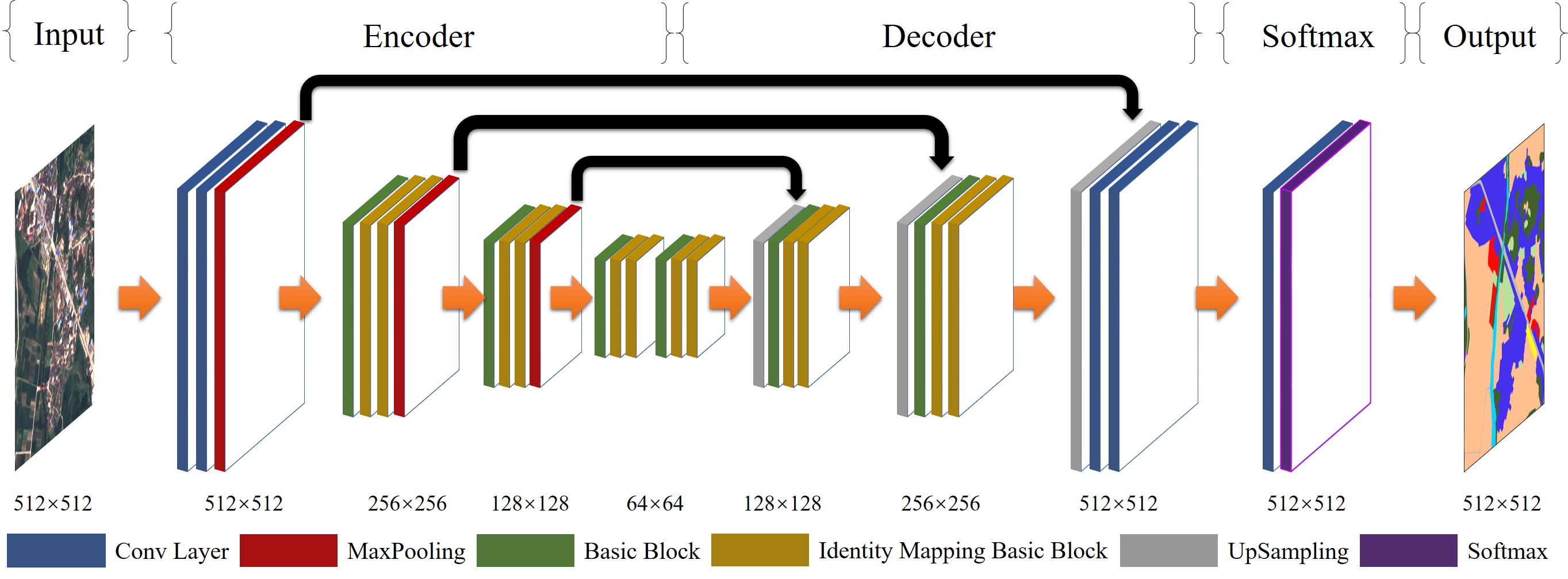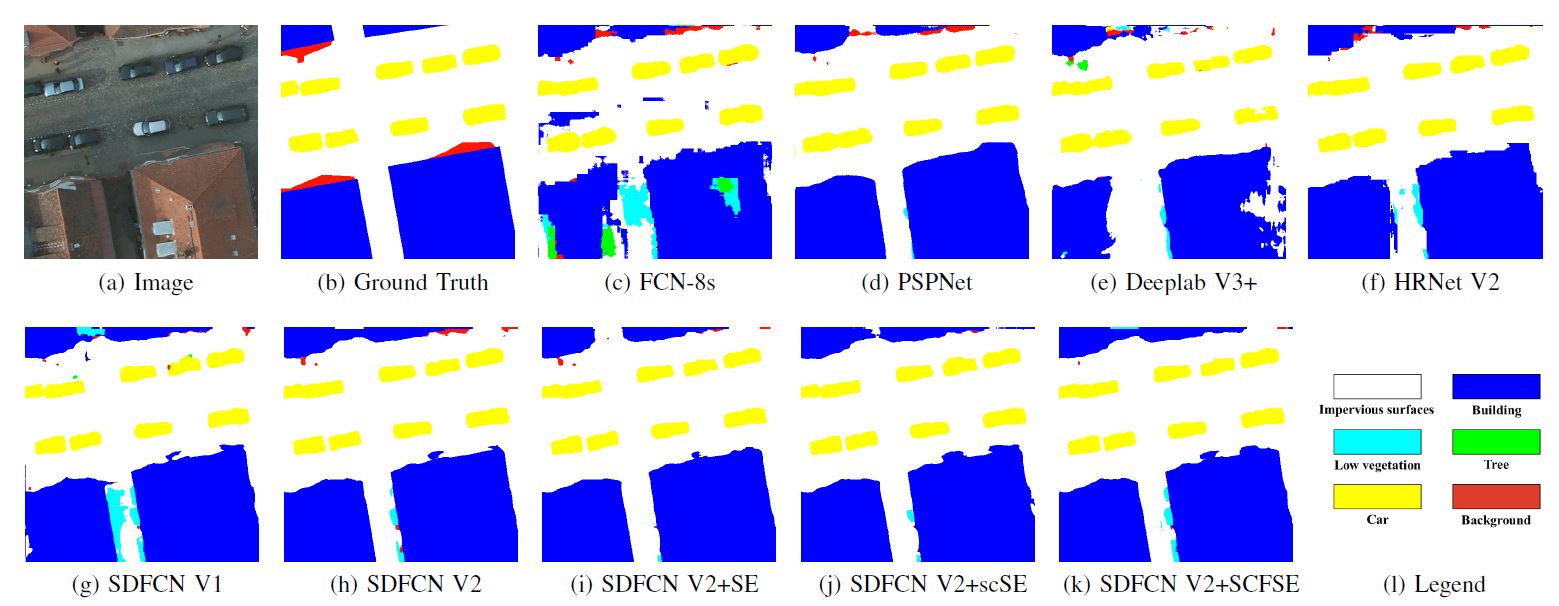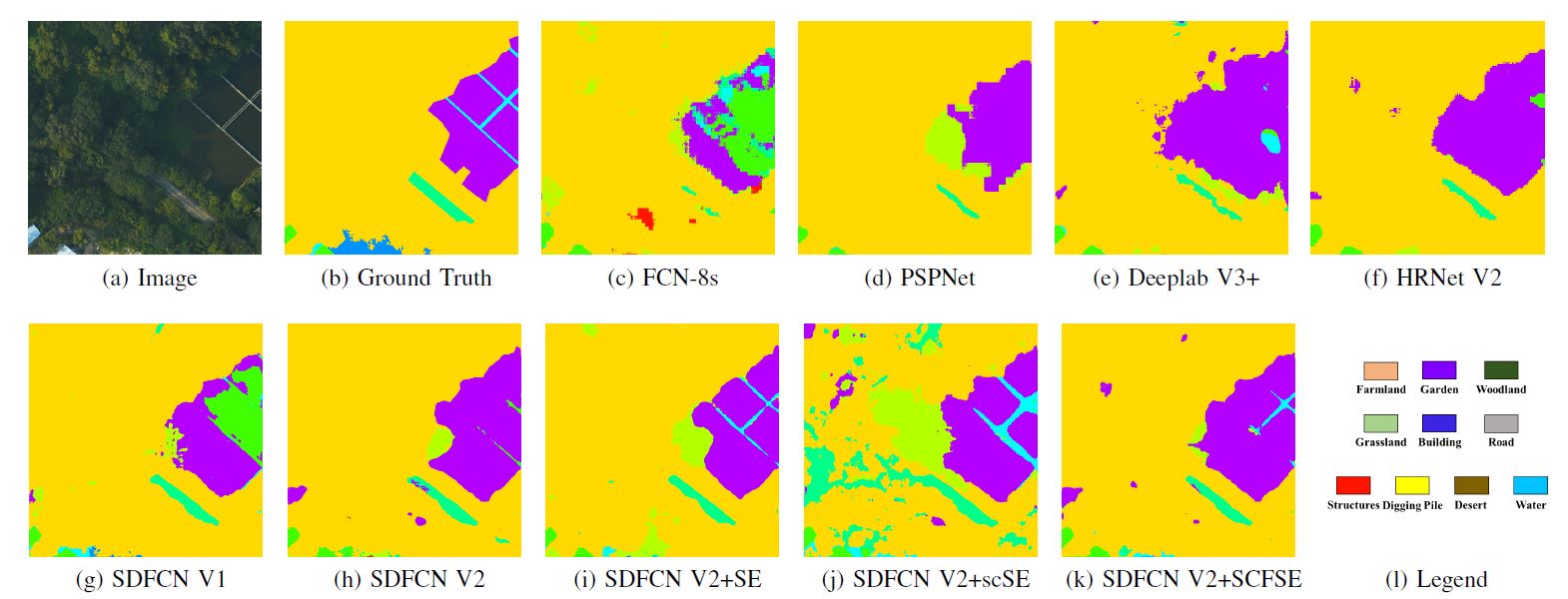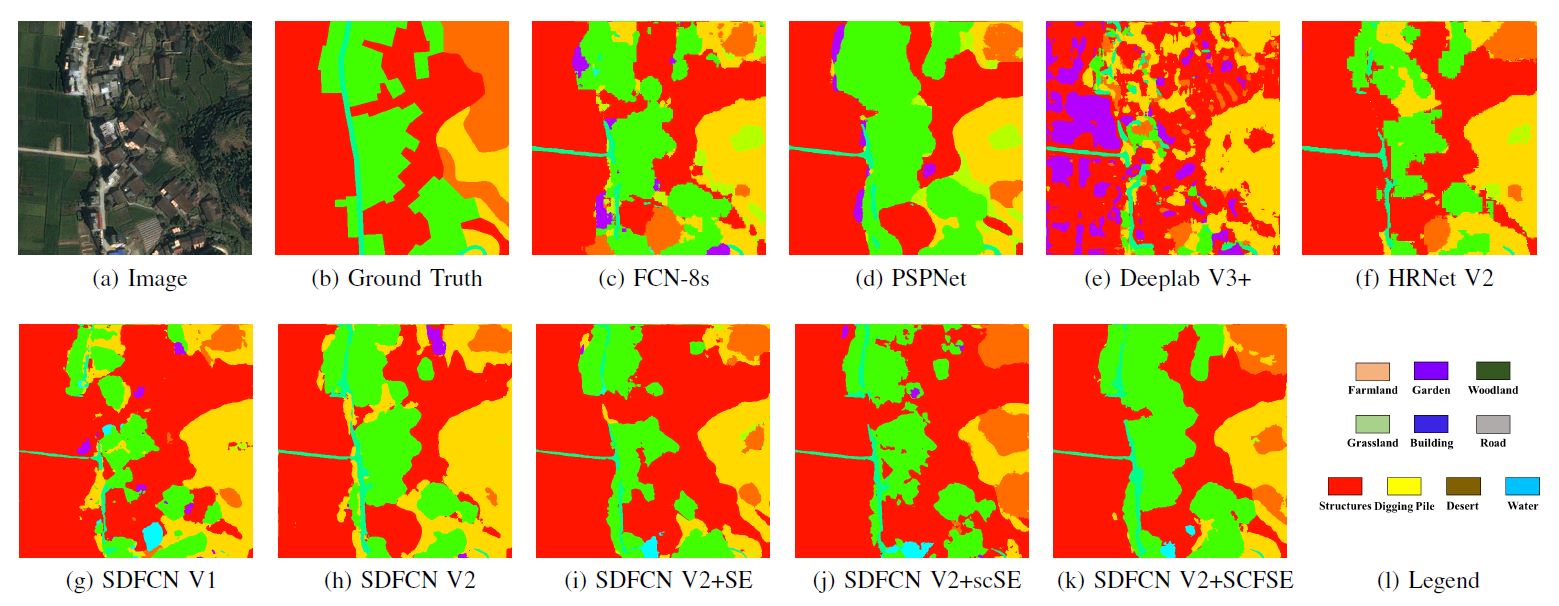In our previous work, we proposed a semantic segmentation framework on VHR RS images based on the SDFCNv1 (Symmetrical dense-shortcut deep fully convolutional networks) model and a post-processing method, attempting to eliminate ``salt and pepper'' phenomena and block effects in prediction results. However, there are still some drawbacks in SDFCNv1 framework and other common FCN-based frameworks as follow:
- Limited model input size and receptive field (RF): A larger RF may increase the complexity and feature abstraction level of the FCN model, and enable the model to detect global structures/shapes over simple texture patterns.
- Overfitting phenomenon: Oversize model with large number of parameters cost more computational resources. When training on small-scale datasets with few categories such as the ISPRS 2D semantic labeling datasets, models are more prone to fall into over-fitting. Besides, other factors like seasonal changes, diverse image resolution and illumination conditions may also cause model's instability.
- Simple post-processing methods for overlarge RS image segmentation: Commonly-used methods simply merge predictions in a sliding-window majority-voting manner. Under different scales of overlapping stride, the final fusion result for the whole RS images differs accordingly. Excessive overlap degree will distinctly increase the amount of calculation.
The overall structure of SDFCN model:

In this research, we propose an improved semantic segmentation framework named SDFCNv2 based on SDFCNv1, to conduct optimal semantic segmentation on RS images. We first construct a novel FCN model with hybrid basic convolutional (HBC) blocks and spatial-channel-fusion squeeze-and-excitation (SCFSE) modules, which occupies larger receptive field and fewer network model parameters. Moreover, we put forward a spectral-specific-stochastic-gamma-transform-based (SSSGT-based) data augmentation method in model training process to improve generalizability of our model. Besides, we design a mask-weighted voting decision fusion post-processing algorithm for image segmentation on overlarge RS. We conducted several experiments on two public datasets and a real surveying and mapping dataset. Extensive experimental results demonstrate that our SDFCNv2 framework can improve the mIoU metric by up to 5.22% compared with the SDFCNv1 framework while using only about half the number of parameters.
All codes of this paper are based on the CVEO_FCN project.
we conducted experiments on two public datasets named Potsdam dataset, Evlab dataset, and one realdata self-constructed dataset named Songxi dataset.
| Dataset | Model | OA | K | mIoU |
|---|---|---|---|---|
| Potsdam | FCN-8s | 0.7444 | 0.7021 | 0.5586 |
| PSPNet | 0.8059 | 0.7687 | 0.6364 | |
| Deeplab V3+ | 0.7436 | 0.6989 | 0.5263 | |
| HRNet V2 | 0.8380 | 0.8029 | 0.6584 | |
| SDFCN V1 | 0.8006 | 0.7615 | 0.6081 | |
| SDFCN V2 | 0.8473 | 0.8140 | 0.6741 | |
| SDFCN V2+SE | 0.8419 | 0.8077 | 0.6744 | |
| SDFCN V2+scSE | 0.8262 | 0.7920 | 0.6685 | |
| SDFCN V2+SCFSE | 0.8503 | 0.8177 | 0.6782 | |
| EvLab | FCN-8s | 0.4730 | 0.4313 | 0.2067 |
| PSPNet | 0.4956 | 0.4647 | 0.2559 | |
| Deeplab V3+ | 0.5492 | 0.5085 | 0.2733 | |
| HRNet V2 | 0.5288 | 0.4831 | 0.2453 | |
| SDFCN V1 | 0.5083 | 0.4641 | 0.2448 | |
| SDFCN V2 | 0.5773 | 0.5380 | 0.2963 | |
| SDFCN V2+SE | 0.5631 | 0.5301 | 0.3017 | |
| SDFCN V2+scSE | 0.4883 | 0.4532 | 0.2496 | |
| SDFCN V2+SCFSE | 0.5945 | 0.5539 | 0.3208 | |
| Singxi | FCN-8s | 0.8567 | 0.7215 | 0.3456 |
| PSPNet | 0.8602 | 0.7307 | 0.3833 | |
| Deeplab V3+ | 0.7708 | 0.5758 | 0.2042 | |
| HRNet V2 | 0.8584 | 0.7208 | 0.3448 | |
| SDFCN V1 | 0.8627 | 0.7280 | 0.3440 | |
| SDFCN V2 | 0.8461 | 0.6955 | 0.3458 | |
| SDFCN V2+SE | 0.8657 | 0.7340 | 0.3708 | |
| SDFCN V2+scSE | 0.8697 | 0.7471 | 0.3621 | |
| SDFCN V2+SCFSE | 0.8762 | 0.7562 | 0.3980 |
Segmentation results on Potsdam dataset with different model:

Segmentation results on Evlab dataset with different model:

Segmentation results on Songxi dataset with different model:

Performances of different gamma-transform-based data augmentation applied on SDFCNv2 model equipped with SCFSE module in three datasets
| Dataset | Gamma augmentation | OA | K | mIoU |
|---|---|---|---|---|
| Postdam | No | 0.8306 | 0.7952 | 0.6531 |
| GGT | 0.8287 | 0.7927 | 0.6508 | |
| SIGT | 0.8261 | 0.7897 | 0.6574 | |
| SSSGT (ours) | 0.8503 | 0.8177 | 0.6782 | |
| EvLab | No | 0.5398 | 0.4963 | 0.2623 |
| GGT | 0.4572 | 0.4263 | 0.2204 | |
| SIGT | 0.5181 | 0.4769 | 0.2310 | |
| SSSGT (ours) | 0.5945 | 0.5539 | 0.3208 | |
| Songxi | No | 0.8501 | 0.7073 | 0.3153 |
| GGT | 0.8336 | 0.6714 | 0.3160 | |
| SIGT | 0.8718 | 0.7483 | 0.3895 | |
| SSSGT (ours) | 0.8762 | 0.7562 | 0.3980 |
Training and validation loss curve of SDFCN V2 model using different gamma-transform-based data augmentation methods on different datasets:

Coming soon
Coming soon
Coming soon
Licensed under an MIT license.